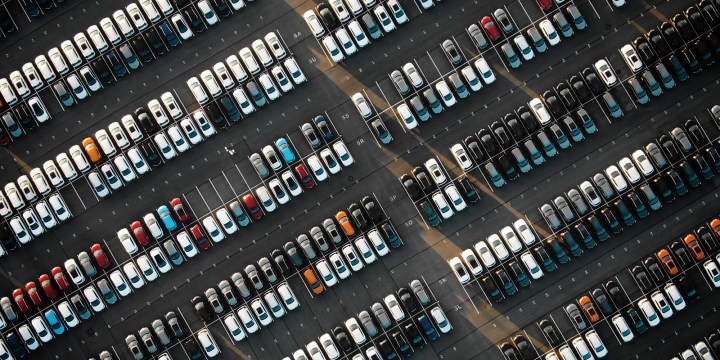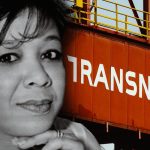AUTOMOTIVE INDUSTRY
Naamsa bemoans lack of progress on new energy vehicle legislation

The Automotive Business Council will host South African Auto Week at the end of October, themed around new energy vehicles, but SA needs to speed up production or be left behind.
The National Association of Automotive Manufacturers, or Naamsa, has released its new vehicle statistics for September, which reflect a “healthy performance” despite despondency about the weakening economy and geopolitical issues.
The announcement comes ahead of the South African Auto Week which Naamsa will host at the Kyalami Grand Prix Circuit in Johannesburg from 24 to 30 October, as part of Transport Month.
New energy vehicles (NEVs) will be top of mind for delegates, as this year’s conference is themed, Reimagining the future together | The Rise of the African Auto Industry: investing in new energy vehicles, infrastructure, and people.
Numbers game
Last month, the local industry sold 47,786 units — a 10.8% year-on-year increase, with export sales showing a 104.6% YoY increase to 41,474.
In a statement released after the media briefing, Naamsa said out of total reported industry sales of 47,786 vehicles, about 81.9% were dealer sales, 14.2% represented sales to the vehicle rental industry, 2.3% sales to the government, and 1.6% to industry corporate fleets.
Passenger car sales had gained 9.7% YoY, to 32,392 units, with significant support from the car rental industry, which bought almost 19% of new passenger cars last month.
With Covid restrictions scrapped in South Africa and business and leisure travel gradually rising, the car rental sector needs to ramp up fleet sizes to cater for greater demand, but that is being hampered by disruptions to global supply chains and a chip shortage. At the peak of the pandemic, car rental companies were forced to sell off stock to stay afloat, which caused the industry’s fleet to reduce by more than half between February 2020 to July 2021.
Naamsa said domestic sales of new light commercial vehicles, bakkies and minibuses increased by almost 15% YoY, at 12,573 units in September 2022, with medium and heavy truck sales rising at a similar rate, with buses gaining 1.8%, or 35 units.
Visit Daily Maverick’s home page for more news, analysis and investigations
Export sales saw a significant increase of 104.6% (21,199 to 41,474 units) but South Africa’s biggest market — Europe — bought 15% fewer vehicles in the past year. That is a reflection of the war in Ukraine — which produces critically important electrical wiring harnesses and other automotive components — disrupted supply chains, sanctions and the declining demand for internal combustion engines (ICEs), as the European Union and the UK are ditching gas-guzzlers.
Europe currently comprises 77% of SA’s export market, but this is at risk as major trade partners ditch gas-guzzlers. Our biggest markets are banning imports and sales of ICE vehicles within less than eight years, and yet SA has hardly even begun producing NEVs.
Naamsa CEO Mikel Mabaso said despite a 176% increase between 2020 and 2021, NEV sales still comprise just 0.19% of the total new vehicle market.
NEV sales, by 13 brands in SA, increased to 2,129 units, which is “very good growth for us, although it’s very small. We’d like to see stimulation of NEVs in the SA market as soon as possible”.
SA’s movement is “painfully slow” on NEV legislation, he said. “We are very concerned that we’ll have to play catch-up as a country in relation to where other markets are at.”
On 18 May 2021, Trade and Industry Minister Ebrahim Patel announced the Green Paper on NEVs, but despite assurances that a White Paper would be released by year-end, Mabasa said the progression has been “very sluggish”.
“We’ve not seen very meaningful progress in relation to finalisation of that White Paper.
“Naamsa and the automotive industry, broadly speaking, are currently working on a discussion document on [NEVs] for South Africa, which we hope will obviously contribute meaningfully in the drafting of the South African White Paper…
“We’ve taken this decision to proactively engage and begin to at least submit our own thoughts in terms of how we see the evolution of [NEVs] in our market.”
Blackouts and supply chain disruptions
The semiconductor shortage was still a serious concern affecting production, compounded by the impact of rolling blackouts and six consecutive increases in the interest rate since November last year, which Mabasa said was impeding their growth.
Power cuts are hurting manufacturing processes across the country. SA has seven local vehicle manufacturers and their manufacturing processes are “profoundly and extremely disrupted” by the outages.
“Our plants… are actually operated and powered through robots and a lot of heavy-duty machinery, which requires longer term lead times to start, program and also to operate.
“Some machines take as long as two hours to be able to recalibrate, particularly in the paint shop.”
He said despite the depressed economy, the new vehicle market’s performance for the year to date was still 13.4% ahead of the same period last year.
“Sixty-four percent of [vehicles] we are producing in SA are exported — we want more locals to buy locally produced vehicles.” BM/DM

















 Become an Insider
Become an Insider
Comments - Please login in order to comment.